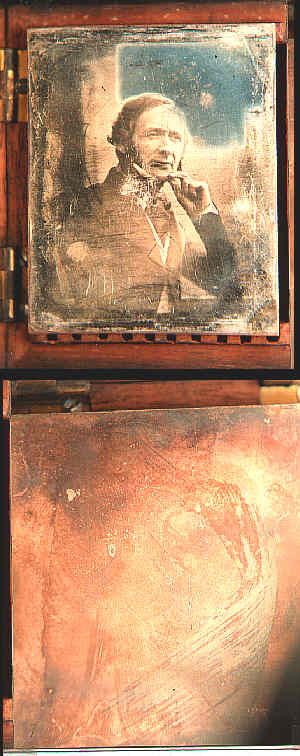
Ninth-plate
daguerreotype Plate "J"
(Writer's collection.)
|
WRITTEN ON BACK: "Milton". The significance of this name is unknown.
For possible
hypotheses see Plate I.
POSSIBLE LENS: This image was possibly taken with the lens John William Draper
describes
second in his sequence of lens experiments to capture a likeness of the human face. Specifically, a
lens
of four inches aperture, with focal length of fourteen inches (about f 3.5). When used indoors
in diffused
light, even with a long exposure of five to seven minutes, such a lens would probably provide
only a
narrow depth of field. The sharpness of this depth of field could be distorted further if the lens was
uncorrected for chromatic aberration (non-achromatic).
Focusing enough intensity of light on the
face to
clearly delineate the eyes and yet not blind the sitter was a difficult problem. Few individuals in
1839
America could have surmounted such obstacles to accomplish this distinctive, eyes-open indoor
likeness of the human face. Just enough depth of field captured sharp detail from blurred nose tip to
hazy ear.
In his own words Dr. Draper described the method he used to accomplish such a true
portrait. Notice that his description of potential defects of operation exactly corresponds with
visual
evidence within this image (the blue stain).
|